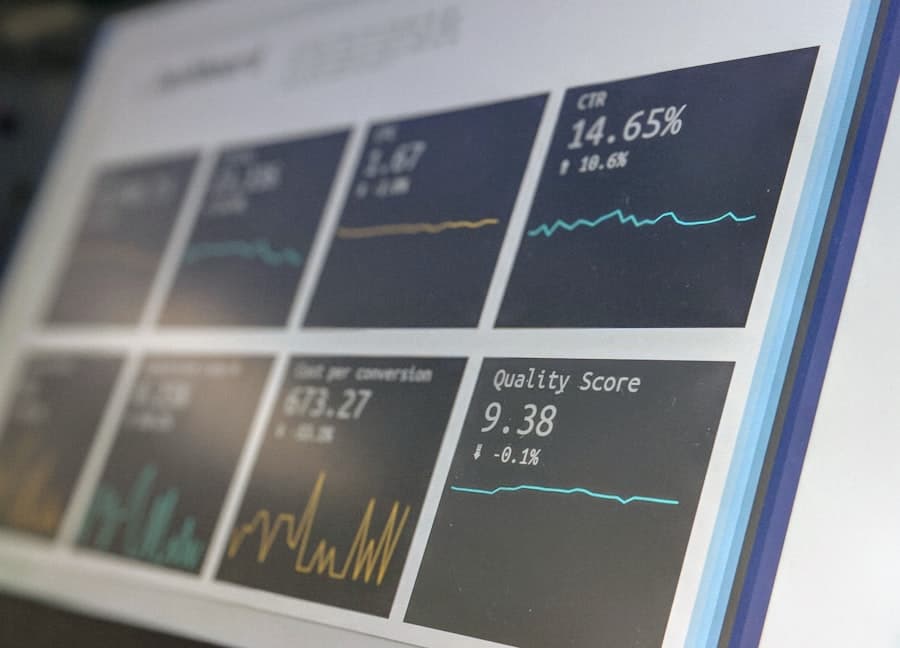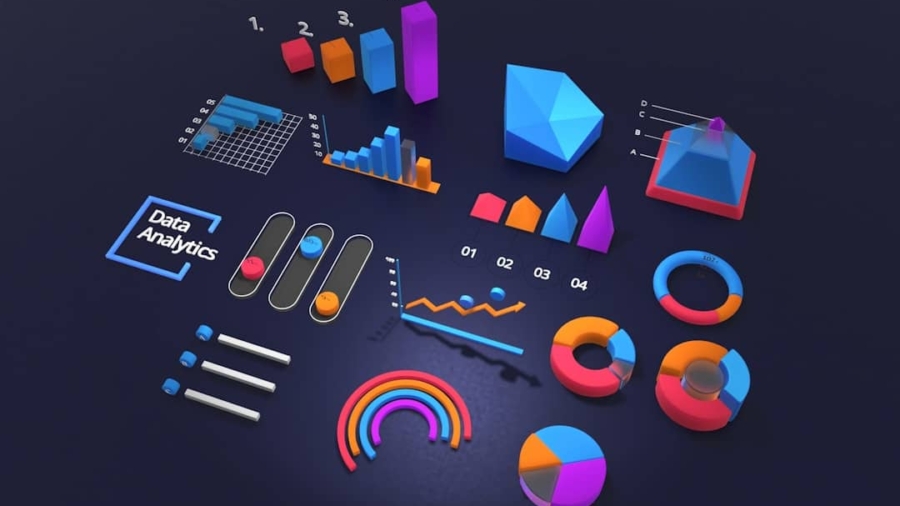Bioinformatics has emerged as a pivotal discipline at the intersection of biology, computer science, and information technology, particularly in the realm of drug development. The integration of computational tools and biological data has revolutionized the way researchers approach the discovery and development of new therapeutics. By harnessing vast amounts of biological information, bioinformatics enables scientists to analyze complex datasets, identify potential drug targets, and streamline the drug development process.
This transformation is not merely a trend; it represents a fundamental shift in how drugs are conceptualized, designed, and brought to market. The significance of bioinformatics in drug development can be attributed to its ability to manage and interpret the enormous volumes of data generated by modern biological research. High-throughput sequencing technologies, for instance, produce terabytes of genomic data that require sophisticated analytical methods for meaningful interpretation.
Bioinformatics provides the necessary frameworks and algorithms to sift through this data, allowing researchers to uncover insights that would be impossible to achieve through traditional experimental methods alone. As a result, bioinformatics is not just an ancillary tool; it is an essential component of contemporary drug discovery pipelines.
Key Takeaways
- Bioinformatics plays a crucial role in drug development by integrating biological data with computational tools to analyze and interpret complex biological systems.
- Genomics and proteomics provide valuable insights into the genetic and protein-level mechanisms underlying diseases, aiding in the identification of potential drug targets.
- Big data and machine learning enable the efficient analysis of large-scale biological datasets, leading to the discovery of novel drug candidates and the prediction of drug responses.
- Bioinformatics accelerates drug target identification and validation by facilitating the analysis of biological pathways, protein interactions, and drug-target interactions.
- Structural bioinformatics aids in rational drug design by predicting the three-dimensional structures of drug targets and facilitating the design of targeted drug molecules.
- Pharmacogenomics and personalized medicine benefit from bioinformatics by analyzing individual genetic variations to optimize drug selection and dosing for personalized treatment.
- Challenges in bioinformatics for drug development include data integration, standardization, and interpretation, as well as the need for advanced computational tools and expertise.
- The future of bioinformatics in drug development holds promise for precision medicine, drug repurposing, and the development of innovative therapeutic strategies based on a deeper understanding of biological systems.
The Role of Genomics and Proteomics in Drug Discovery
Genomics and proteomics are two foundational pillars of bioinformatics that play a critical role in drug discovery. Genomics focuses on the study of an organism’s complete set of DNA, including all of its genes, while proteomics examines the entire set of proteins produced by an organism. Together, these fields provide a comprehensive understanding of biological systems at both the genetic and protein levels, which is crucial for identifying new drug targets and understanding disease mechanisms.
In drug discovery, genomics can reveal genetic variations associated with diseases, enabling researchers to pinpoint specific genes that may be implicated in pathological processes. For example, the identification of mutations in the BRCA1 and BRCA2 genes has led to targeted therapies for breast and ovarian cancers. By utilizing genomic data, bioinformaticians can employ techniques such as genome-wide association studies (GWAS) to correlate genetic markers with disease phenotypes, thereby identifying potential therapeutic targets.
Similarly, proteomics allows for the exploration of protein expression patterns and post-translational modifications that can influence drug efficacy and safety. By integrating genomic and proteomic data, researchers can develop a more holistic view of disease biology, leading to more effective drug candidates.
Utilizing Big Data and Machine Learning in Drug Development

The advent of big data has transformed many sectors, and drug development is no exception. The ability to collect, store, and analyze vast datasets has opened new avenues for research and innovation. In the context of drug development, big data encompasses a wide range of information sources, including clinical trial data, electronic health records, genomic sequences, and chemical compound libraries.
The challenge lies not only in managing this data but also in extracting actionable insights that can inform decision-making processes. Machine learning (ML) algorithms have become indispensable tools in navigating the complexities of big data in drug development. These algorithms can identify patterns and relationships within large datasets that may not be immediately apparent to human researchers.
For instance, ML models can predict the biological activity of compounds based on their chemical structures, significantly accelerating the lead optimization phase of drug development. A notable example is the use of deep learning techniques to predict protein-ligand interactions, which can streamline the identification of promising drug candidates. Furthermore, ML can enhance patient stratification in clinical trials by analyzing genetic and phenotypic data to identify subpopulations that are more likely to respond to specific treatments.
Accelerating Drug Target Identification and Validation with Bioinformatics
The identification and validation of drug targets are critical steps in the drug development process. Bioinformatics tools facilitate these processes by providing researchers with sophisticated methods for analyzing biological data. One approach involves the use of network biology, which allows scientists to visualize and analyze complex interactions between genes, proteins, and other biomolecules within cellular pathways.
By constructing interaction networks, researchers can identify key nodes that represent potential drug targets. Moreover, bioinformatics enables the integration of various omics data—such as genomics, transcriptomics, and metabolomics—to validate potential targets. For instance, if a particular gene is found to be overexpressed in cancer tissues compared to normal tissues through transcriptomic analysis, bioinformatics tools can help assess its role within relevant signaling pathways.
This multi-omics approach not only strengthens the case for a target’s involvement in disease but also provides insights into potential off-target effects or compensatory mechanisms that may arise during treatment. By leveraging these advanced analytical techniques, researchers can significantly reduce the time and resources required for target identification and validation.
Leveraging Structural Bioinformatics for Rational Drug Design
Structural bioinformatics plays a crucial role in rational drug design by providing insights into the three-dimensional structures of biological macromolecules such as proteins and nucleic acids. Understanding these structures is essential for designing molecules that can interact effectively with their targets. Techniques such as X-ray crystallography and nuclear magnetic resonance (NMR) spectroscopy have been instrumental in elucidating protein structures, while computational methods like molecular modeling allow researchers to predict how small molecules will bind to these targets.
One prominent application of structural bioinformatics is in the field of structure-based drug design (SBDD). By utilizing high-resolution structural data, researchers can design compounds that fit precisely into the active sites of target proteins. For example, the development of protease inhibitors for HIV treatment was significantly advanced through SBDD techniques that allowed scientists to visualize how these inhibitors could block viral replication by binding to the protease enzyme.
Additionally, virtual screening methods enable researchers to evaluate large libraries of compounds against target structures efficiently, identifying promising candidates for further testing.
Application of Bioinformatics in Pharmacogenomics and Personalized Medicine

Pharmacogenomics is an area where bioinformatics has made substantial contributions by examining how genetic variations influence individual responses to drugs. This field aims to tailor medical treatments based on a patient’s genetic makeup, thereby enhancing therapeutic efficacy while minimizing adverse effects. Bioinformatics tools facilitate the analysis of genomic data from diverse populations to identify polymorphisms that affect drug metabolism and response.
For instance, variations in the CYP450 gene family are well-documented to influence how patients metabolize certain medications. By employing bioinformatics approaches to analyze genomic data from patients undergoing treatment with drugs like warfarin or clopidogrel, clinicians can predict optimal dosages tailored to individual genetic profiles. This personalized approach not only improves patient outcomes but also reduces healthcare costs associated with adverse drug reactions and ineffective treatments.
Overcoming Challenges and Limitations in Bioinformatics for Drug Development
Despite its transformative potential, bioinformatics faces several challenges that can hinder its effectiveness in drug development. One significant issue is the quality and standardization of biological data. The vast array of datasets generated from different sources often varies in terms of quality, format, and completeness.
Inconsistent data can lead to erroneous conclusions or missed opportunities during the drug discovery process. Another challenge lies in the complexity of biological systems themselves. Biological interactions are often non-linear and influenced by numerous factors such as environmental conditions and epigenetic modifications.
This complexity makes it difficult to develop predictive models that accurately reflect real-world scenarios. Furthermore, there is a growing need for interdisciplinary collaboration among biologists, computer scientists, and clinicians to ensure that bioinformatics tools are effectively integrated into research workflows. Addressing these challenges requires ongoing investment in technology development, data standardization efforts, and training programs that foster collaboration across disciplines.
Future Prospects and Implications of Bioinformatics in Drug Development
Looking ahead, the future prospects for bioinformatics in drug development are promising yet complex. As technology continues to advance, we can expect even greater integration of artificial intelligence (AI) and machine learning into bioinformatics workflows. These advancements will likely enhance predictive modeling capabilities, enabling researchers to identify novel drug candidates more efficiently than ever before.
Moreover, as personalized medicine gains traction, bioinformatics will play a crucial role in developing targeted therapies tailored to individual patients’ genetic profiles. The increasing availability of genomic sequencing technologies will further fuel this trend by providing clinicians with real-time insights into patients’ genetic makeup during treatment planning. However, ethical considerations surrounding data privacy and security will need to be addressed as more personal health information is utilized for research purposes.
Ensuring that patient data is handled responsibly while maximizing its potential benefits will be paramount as we navigate this evolving landscape. In summary, bioinformatics stands at the forefront of modern drug development, offering innovative solutions that enhance our understanding of complex biological systems and streamline therapeutic discovery processes. As we continue to explore its vast potential, it is clear that bioinformatics will remain an indispensable ally in our quest for more effective treatments for a wide array of diseases.
A related article to “How Bioinformatics Is Accelerating New Drug Development” is “Discover the Best Paying Jobs in Tech 2023” which provides insights into the highest paying jobs in the tech industry. This article can be found at com/discover-the-best-paying-jobs-in-tech-2023/’>this link.
It is important to understand the various career opportunities available in the tech sector, especially for those interested in bioinformatics and drug development.
FAQs
What is bioinformatics?
Bioinformatics is the field of science that combines biology, computer science, and information technology to analyze and interpret biological data. It involves the use of computational tools to understand biological processes, such as DNA sequences, protein structures, and gene expression patterns.
How is bioinformatics used in drug development?
Bioinformatics is used in drug development to analyze large datasets of biological information, such as genomic and proteomic data, to identify potential drug targets, predict drug interactions, and optimize drug efficacy. It helps researchers to understand the underlying biological mechanisms of diseases and develop more targeted and effective drugs.
How does bioinformatics accelerate new drug development?
Bioinformatics accelerates new drug development by enabling researchers to quickly analyze and interpret large amounts of biological data, identify potential drug targets, and predict the efficacy and safety of drug candidates. This helps to streamline the drug discovery process and reduce the time and cost of bringing new drugs to market.
What are some examples of bioinformatics tools used in drug development?
Some examples of bioinformatics tools used in drug development include sequence alignment algorithms, protein structure prediction software, molecular docking simulations, and pathway analysis tools. These tools help researchers to analyze and interpret biological data, identify potential drug targets, and predict the effects of drug candidates.
What are the benefits of using bioinformatics in drug development?
The benefits of using bioinformatics in drug development include the ability to identify and prioritize potential drug targets, predict the efficacy and safety of drug candidates, and optimize drug design. This can lead to the development of more targeted and effective drugs, as well as a more efficient drug discovery process.

